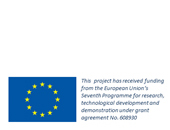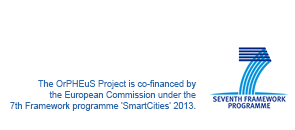Objective 3: Extended hybrid energy network modelling of citie's hybrid energy networks
A simulation of the behaviour of improved hybrid energy networks.
The overall aim of the tasks whithin Objective 3 is the development of an enhanced multi domain simulation environment (focusing on electricity and district heating) for the definition of technical requirements for cooperative control strategies, as well as for validation of related control concepts.
Thermal domain simulation
The implementation of the district heating system in Skellefteå (supply units, distribution grid, storage and demand models) and the thermal systems in Ulm (demand of buildings and supply and storage units) is done in the simulation environment Dymola/Modelica based on Modelica Fluid library specifications and on the extension of it resulting in the library “DisHeatLib” developed in the past 7 years by AIT. The Modelica language is an open source modeling language, consisting of a language standard definition along with a large collection of basic model components from various fields, the so-called Modelica Standard Library.

Electricity domain simulation
The implementation of the electricity grids for both Skellefteå and Ulm demo sites is done in the simulation environment DIgSILENT PowerFactory (DIgital SImuLation and Electrical NeTwork calculation program). PowerFactory is a commercial computer aided engineering tool for the analysis of industrial, utility, and commercial electrical power systems. It has been designed as an advanced integrated and interactive software package dedicated to electrical power system and control analysis in order to achieve the main objectives of planning and operation optimization.
Co-simulation
The prerequisite for a model-based evaluation of hybrid system solutions is the detailed simulation of not only the individual subsystems but also their dynamic interactions. Unfortunately, the state-of-the-art simulation tools for energy systems are domain-specific, i.e. they are by themselves not well suited for modeling and simulating hybrid energy systems that integrate subsystems across the borders of traditional engineering domains. A solution to this challenge can be provided by a co-simulation approach, which couples the existing domain-specific state-of-the-art tools in a way that enables a dynamic multi-physics simulation of the hybrid system.
By basing the co-simulation framework on the de-facto standard introduced by the FMI specification, the corresponding software developed within the OrPHEuS project will be re-usable for follow-up projects. This ensures a sustainable development process beyond the scope of OrPHEuS in the future.


